Ferrari: Difference between revisions
| [accepted revision] | [pending revision] |
m Reverted 1 edit by 97.77.22.4 (talk): Rv del. using TW |
|||
| Line 44: | Line 44: | ||
Early in 1969, Fiat took a 50% stake in Ferrari. An immediate result was an increase in available investment funds, and work started at once on a factory extension intended to transfer production from Fiat's Turin plant of the Ferrari engined Fiat Dino. New model investment further up in the Ferrari range also received a boost. |
Early in 1969, Fiat took a 50% stake in Ferrari. An immediate result was an increase in available investment funds, and work started at once on a factory extension intended to transfer production from Fiat's Turin plant of the Ferrari engined Fiat Dino. New model investment further up in the Ferrari range also received a boost. |
||
In 1988, Enzo Ferrari oversaw the launch of the [[Ferrari F40]], the last new Ferrari to be launched before his death later that year, and arguably one of the most |
In 1988, Enzo Ferrari oversaw the launch of the [[Ferrari F40]], the last new Ferrari to be launched before his death later that year, and arguably one of the most famouls [[supercar]]s ever made. |
||
From 2002 to 2004, Ferrari produced the Enzo. The Enzo was Ferrari's fastest model at the time, and was introduced and named in honor of the company's founder, Enzo Ferrari (Although it was to be called the F60, continuing on from the F40 and F50, but Ferrari was so pleased with it, they called it the Enzo instead). It was initially offered to loyal and reoccurring customers, each of the 399 made (minus the 400th which was donated to the Vatican for charity) had a price tag of $650,000 apiece. |
From 2002 to 2004, Ferrari produced the Enzo. The Enzo was Ferrari's fastest model at the time, and was introduced and named in honor of the company's founder, Enzo Ferrari (Although it was to be called the F60, continuing on from the F40 and F50, but Ferrari was so pleased with it, they called it the Enzo instead). It was initially offered to loyal and reoccurring customers, each of the 399 made (minus the 400th which was donated to the Vatican for charity) had a price tag of $650,000 apiece. |
||
Revision as of 19:01, 22 November 2013
This article needs additional citations for verification. (June 2013) |
44°31′57″N 10°51′51″E / 44.532447°N 10.864137°E
| File:Ferrari-Logo.svg | |
| Company type | Società per azioni |
|---|---|
| ISIN | NL0011585146 |
| Industry | Automotive |
| Founded | 1947 (historical 1929) |
| Founder | Enzo Ferrari |
| Headquarters | , |
Key people | Luca di Montezemolo (Chairman) Piero Ferrari (Vice Chairman) Amedeo Felisa (CEO) |
| Products | Supercars |
Production output | 7,044 units (2011)[1] |
| Revenue | |
| Owner | Fiat S.p.A. (90%) Piero Ferrari (10%) |
Number of employees | 2,695 (2011)[1] |
| Parent | Fiat S.p.A. |
| Website | Ferrari.com |
Ferrari S.p.A. is an Italian sports car manufacturer based in Maranello, Italy. Founded by Enzo Ferrari in 1929, as Scuderia Ferrari, the company sponsored drivers and manufactured race cars before moving into production of street-legal vehicles as Ferrari S.p.A. in 1947. In 1969, Fiat S.p.A. became a shareholder of Ferrari and now its majority owner. Throughout its history, the company has been noted for its continued participation in racing, especially in Formula One, where it has had great[citation needed] success. Ferrari road cars are generally seen as a symbol of speed, luxury and wealth.
History
Enzo Ferrari was not initially interested in the idea of producing road cars when he formed Scuderia Ferrari (literally "Ferrari Stable", and usually used to mean "Team Ferrari", it is correctly pronounced [skudeˈriːa]) in 1928 as a sponsor for amateur drivers headquartered in Modena. Ferrari prepared, and successfully raced, various drivers in Alfa Romeo cars until 1938, when he was hired by Alfa Romeo to head their motor racing department.
In 1941, Alfa Romeo was confiscated by the fascist government of Benito Mussolini as part of the Axis Powers' war effort. Enzo Ferrari's division was small enough to be unaffected by this. Because he was prohibited by contract from racing for four years, the Scuderia briefly became Auto Avio Costruzioni Ferrari, which ostensibly produced machine tools and aircraft accessories. Also known as SEFAC (Scuderia Enzo Ferrari Auto Corse), Ferrari did in fact produce one race car, the Tipo 815, in the non-competition period. It was the first actual Ferrari car (it debuted at the 1940 Mille Miglia), but due to World War II it saw little competition. In 1943 the Ferrari factory moved to Maranello, where it has remained ever since. The factory was bombed by the Allies in 1944 and rebuilt in 1946, after the war ended, and included a works for road car production.

The first Ferrari road car was the 1947 125 S, powered by a 1.5 L V12 engine; Enzo Ferrari reluctantly built and sold his automobiles to fund Scuderia Ferrari.[2]
Early in 1969, Fiat took a 50% stake in Ferrari. An immediate result was an increase in available investment funds, and work started at once on a factory extension intended to transfer production from Fiat's Turin plant of the Ferrari engined Fiat Dino. New model investment further up in the Ferrari range also received a boost.
In 1988, Enzo Ferrari oversaw the launch of the Ferrari F40, the last new Ferrari to be launched before his death later that year, and arguably one of the most famouls supercars ever made. From 2002 to 2004, Ferrari produced the Enzo. The Enzo was Ferrari's fastest model at the time, and was introduced and named in honor of the company's founder, Enzo Ferrari (Although it was to be called the F60, continuing on from the F40 and F50, but Ferrari was so pleased with it, they called it the Enzo instead). It was initially offered to loyal and reoccurring customers, each of the 399 made (minus the 400th which was donated to the Vatican for charity) had a price tag of $650,000 apiece.
In 2012, September 15, 964 Ferrari cars (worth over $162million) attended the Ferrari Driving Days event at Silverstone Circuit and paraded round the Silverstone Circuit and set the World Record.[3]
Motorsport
- For a complete list of Ferrari racing cars, see List of Ferrari competition cars.

Since the company's beginnings, Ferrari has been involved in motorsport, competing in a range of categories including Formula One and sports car racing through its Scuderia Ferrari sporting division as well as supplying cars and engines to other teams and for one make series.
The 1940 AAC 815 was the first racing car to be designed by Enzo Ferrari, although it was not badged as a Ferrari model.
Scuderia Ferrari
Scuderia Ferrari has participated in a number of classes of motorsport, though it is currently only officially involved in Formula One. It is the only team to have competed in the Formula One World Championship continuously since its inception in 1950. José Froilán González gave the team its first F1 victory at the 1951 British Grand Prix.

Alberto Ascari gave Ferrari its first Drivers Championship a year later. Ferrari is the oldest team in the championship, and the most successful: the team holds nearly every Formula One record. As of 2008[update], the team's records include 15 World Drivers Championship titles (1952, 1953, 1956, 1958, 1961, 1964, 1975, 1977, 1979, 2000, 2001, 2002, 2003, 2004 and 2007) 16 World Constructors Championship titles (1961, 1964, 1975, 1976, 1977, 1979, 1982, 1983, 1999, 2000, 2001, 2002, 2003, 2004, 2007 and 2008), 209 Grand Prix victories, 4925.27 points, 622 podium finishes, 203 pole positions, and 218 fastest laps in 776 Grands Prix contested.
Notable Ferrari drivers include José Froilán González, Tazio Nuvolari, Juan Manuel Fangio, Luigi Chinetti, Alberto Ascari, Wolfgang von Trips, Phil Hill, Olivier Gendebien, Mike Hawthorn, Peter Collins, Giancarlo Baghetti, John Surtees, Lorenzo Bandini, Ludovico Scarfiotti, Jacky Ickx, Mario Andretti, Clay Regazzoni, Niki Lauda, Carlos Reutemann, Jody Scheckter, Gilles Villeneuve, Didier Pironi, Patrick Tambay, René Arnoux, Michele Alboreto, Gerhard Berger, Nigel Mansell, Alain Prost, Jean Alesi, Eddie Irvine, Rubens Barrichello, Michael Schumacher, Kimi Räikkönen, Felipe Massa, and Fernando Alonso.
At the end of the 2006 season, the team courted controversy by continuing to allow Marlboro to sponsor them after they, along with the other F1 teams, made a promise to end sponsorship deals with tobacco manufacturers. A five-year deal was agreed and although this is not due to end until 2011, in April 2008 Marlboro dropped their on-car branding on Ferrari.
The drivers competing for 2009 were Felipe Massa and Kimi Räikkönen. As of 2010 Fernando Alonso has started racing for Ferrari after racing for Renault, Minardi and Mclaren, filling Kimi Räikkönen's former seat.
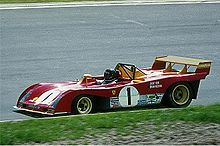
In addition to Formula One, Ferrari also entered cars in sportscar racing, the two programs existing in parallel for many years.
In 1949, Luigi Chinetti drove a 166 M to Ferrari's first win in motorsports, the 24 Hours of Le Mans. Ferrari went on to dominate the early years of the World Sportscar Championship which was created in 1953, winning the title seven out of its first nine years.
When the championship format changed in 1962, Ferrari earned titles in at least one class each year through to 1965 and then again in 1967. Ferrari would win one final title, the 1972 World Championship of Makes before Enzo decided to leave sports car racing after 1973 and allow Scuderia Ferrari to concentrate solely on Formula One.
During Ferrari's seasons of the World Sportscars Championship, they also gained more wins at the 24 Hours of Le Mans, with the factory team earning their first in 1954. Another win would come in 1958, followed by five consecutive wins from 1960 to 1964. Luigi Chinetti's North American Racing Team (NART) would take Ferrari's final victory at Le Mans in 1965.
Although Scuderia Ferrari no longer participated in sports cars after 1973, they have occasionally built various successful sports cars for privateers. These include the BB 512 LM in the 1970s, the 333 SP which won the IMSA GT Championship in the 1990s, and currently the F430 GT2 and GT3 which are currently winning championships in their respective classes.
Race cars for other teams
Throughout its history, Ferrari has supplied racing cars to other entrants, aside from its own works Scuderia Ferrari team.
In the 1950s and 60s, Ferrari supplied Formula One cars to a number of private entrants and other teams. One famous example was Tony Vandervell's team, which raced the Thinwall Special modified Ferraris before building their own Vanwall cars. The North American Racing Team's entries in the final three rounds of the 1969 season were the last occasions on which a team other than Scuderia Ferrari entered a World Championship Grand Prix with a Ferrari car.[4]
Ferrari supplied cars complete with V8 engines for the A1 Grand Prix series, from the 2008-09 season.[5] The car was designed by Rory Byrne and is styled to resemble the 2004 Ferrari Formula one car.
Ferrari currently runs a customer GT program for a racing version of its 458 model, and has done so for the 458's predecessors, dating back to the 355 in the late 1990s. Such private teams as the American Risi Competizione and Italian AF Corse teams have been very successful with Ferrari GT racers over the years. This car, made for endurance sportscar racing to be competed against such racing versions of the Audi R8, McLaren MP4-12C, and BMW Z4 has proven to be successful, but not as successful as its predecessor, the F430. The Ferrari Challenge is a one make racing series for the Ferrari 458. The FXX is not road legal, and is therefore only used for track events.
Road cars
- For a complete list, including future and concept car models, see List of Ferrari road cars.

Current models
| California | 458 Italia | FF |
|---|---|---|
|
|
|

|

|

|
| 458 Spider | F12 Berlinetta | LaFerrari |
|
|
|

|

|

|
Ferrari's first vehicle was the 125 S sports/racing model. In 1949, the Ferrari 166 Inter, the company's first move into the grand touring market, which continues to make up the bulk of Ferrari sales to the present day.
Several early cars featured bodywork customised by a number of coachbuilders such as Pininfarina, Zagato and Bertone.
The Dino was the first mid-engined Ferrari. This layout would go on to be used in most Ferraris of the 1980s and 1990s. V8 Ferrari models make up well over half of the marque's total production.
For a time, Ferrari built 2+2 versions of its mid-engined V8 cars. Although they looked quite different from their 2-seat counterparts, both the GT4 and Mondial were closely related to the 308 GTB.
The company has also produced front-engined 2+2 cars, culminating in the current 612 Scaglietti and California.
Ferrari entered the mid-engined 12-cylinder fray with the Berlinetta Boxer in 1973. The later Testarossa remains one of the most famous Ferraris.
Supercars
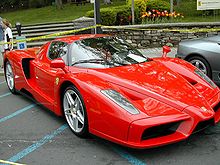
The company's loftiest efforts have been in the supercar market. The 1962 250 GTO may be considered the first in the line of Ferrari supercars, which extends to the recent Enzo and FXX models.
Concept cars and specials
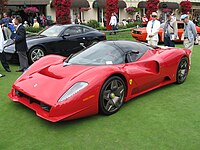
Ferrari has produced a number of concept cars, such as the Ferrari Mythos. While some of these were quite radical (such as the Ferrari Modulo) and never intended for production, others such as the Ferrari Mythos have shown styling elements which were later incorporated into production models.
The most recent concept car to be produced by Ferrari themselves was the 2010 Ferrari Millechili.
A number of one-off special versions of Ferrari road cars have also been produced, some of which have been commissioned by wealthy owners. One of the examples is the Ferrari P4/5.
The Special Projects program is a collaboration by Ferrari with Italian automobile coachbuilders such as Fioravanti, Pininfarina, and Zagato to build custom cars using selected Ferrari models as a structural base. The first car under this program is the SP1, commissioned by a Japanese business executive. The second is the P540 Superfast Aperta, commissioned by an American enthusiast.
Bio-fuel and hybrid cars
Ferrari has considered making hybrids; for example, a F430 Spider that runs on ethanol was displayed at the 2008 Detroit Auto Show. Ferrari has announced that a hybrid will be in production by 2015. At the 2010 Geneva Motor Show, Ferrari unveiled a hybrid version of their flagship 599. Called the "HY-KERS Concept", Ferrari's hybrid system adds more than 100 horsepower on top of the 599 Fiorano's 612 HP.[6]
Naming conventions
Until the early 1980s, Ferrari followed a three-number naming scheme based on engine displacement:
- V6 and V8 models used the total displacement (in decilitres) for the first two digits and the number of cylinders as the third. Thus, the 206 was a 2.0 L V6 powered vehicle, while the 348 used a 3.4 L V8, although, for the F355, the last digit refers to 5 valves per cylinder. Upon introduction of the 360 Modena, the digits for V8 models (which now carried a name as well as a number) refer only to total engine displacement. The numerical indication aspect of this name carried on to the F430, however the F430's replacement, the 458 Italia uses the same naming as the 206 and 348.
- V12 models used the displacement (in cubic centimetres) of one cylinder. Therefore, the famed 365 Daytona had a 4390 cc V12. However, some newer V12-engined Ferraris, such as the 599, have three-number designations that refer only to total engine displacement.
- Flat 12 (boxer) models used the displacement in litres. Therefore, the BB 512 was five litre flat 12 (a Berlinetta Boxer, in this case). However, the original Berlinetta Boxer was the 365 GT4 BB, which was named in a similar manner to the V12 models.
- Halo Car F followed by the anniversary in years, such as the F40 and F50. The Enzo skipped this rule, although the F60 name was applied to a Ferrari Formula One car and is sometimes attached to the Enzo.
- Some models, such as the 1980 Mondial and the 1984 Testarossa did not follow a three-number naming scheme.

Most Ferraris were also given designations referring to their body style. In general, the following conventions were used:
- M ("Modificata"), placed at the end of a model's number, denotes a modified version of its predecessor and not a complete evolution (see F512 M and 575 M Maranello).
- GTB ("Gran Turismo Berlinetta") models are closed Berlinettas, or coupes.
- GTS ("Gran Turismo Spyder") in older models, are open Spyders (spelt "y"), or convertibles (see 365 GTS/4); however, in more recent models, this suffix is used for targa top models (see Dino 246 GTS, and F355 GTS; the exception being the 348 TS, which is the only targa named differently). The convertible models now use the suffix "Spider" (spelt "i") (see F355 Spider, and 360 Spider).
- GTO ("Gran Turismo Omologata"), placed at the end of a model's number, denotes a modified version of its predecessor. Indeed, those three letters designate a model which has been designed and improved for racetrack use while still being a street-legal model. Only three models bear those three letters; the 250 GTO of 1962, the 288 GTO of 1984 and the 599 GTO of 2010.
This naming system can be confusing, as some entirely different vehicles used the same engine type and body style. Many Ferraris also had other names affixed (like Daytona) to identify them further. Many such names are actually not official factory names. The Daytona name commemorates Ferrari's triple success in the February 1967 24 Hours of Daytona with the 330 P4.[7] Only in the 1973 Daytona 24 Hours, a 365 GTB/4 model run by NART (who raced Ferrari's in America) ran second, behind a Porsche 911.[8]
The various Dino models were named for Enzo's son, Dino Ferrari, and were marketed as Dinos by Ferrari and sold at Ferrari dealers—for all intents and purposes they are Ferraris.
In the mid-1990s, Ferrari added the letter "F" to the beginning of all models (a practice abandoned after the F512 M and F355, but adopted again with the F430).
Identity
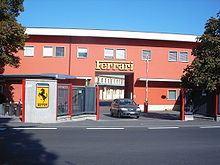
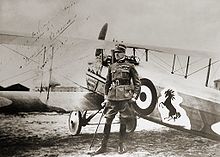
The famous symbol of the Ferrari race team is the Cavallino Rampante ("prancing horse") black prancing stallion on a yellow shield, usually with the letters S F (for Scuderia Ferrari), with three stripes of green, white and red (the Italian national colors) at the top. The road cars have a rectangular badge on the hood (see picture at top of page), and, optionally, the shield-shaped race logo on the sides of both front wings, close to the door.
On 17 June 1923, Enzo Ferrari won a race at the Savio track in Ravenna where he met the Countess Paolina, mother of Count Francesco Baracca, an ace of the Italian air force and national hero of World War I, who used to paint a horse on the side of his planes. The Countess asked Enzo to use this horse on his cars, suggesting that it would bring him good luck. The original "prancing horse" on Baracca's airplane was painted in red on a white cloud-like shape, but Ferrari chose to have the horse in black (as it had been painted as a sign of grief on Baracca's squadron planes after the pilot was killed in action) and he added a canary yellow background as this is the color of the city of Modena, his birthplace. The Ferrari horse was, from the very beginning, markedly different from the Baracca horse in most details, the most noticeable being the tail that in the original Baracca version was pointing downward.
Ferrari has used the cavallino rampante on official company stationery since 1929. Since the Spa 24 Hours of 9 July 1932, the cavallino rampante has been used on Alfa Romeos raced by Scuderia Ferrari.
The motif of a prancing horse is old, it can be found on ancient coins. A similar black horse on a yellow shield is the Coat of Arms of the German city of Stuttgart, home of Mercedes-Benz and the design bureau of Porsche, both being main competitors of Alfa and Ferrari in the 1930s. The city's name derives from Stutengarten, an ancient form of the German word Gestüt, which translates into English as stud farm and into Italian as scuderia. Porsche also includes the Stuttgart sign in its corporate logo, centred in the emblem of the state of Württemberg. Stuttgart's Rössle has both rear legs firmly planted on the soil, like Baracca's horse, but unlike Ferrari's cavallino.
Fabio Taglioni used the cavallino rampante on his Ducati motorbikes, as Taglioni was born at Lugo di Romagna like Baracca, and his father too was a military pilot during WWI (although not part of Baracca's squadron, as is sometimes mistakenly reported). As Ferrari's fame grew, Ducati abandoned the horse- perhaps the result of a private agreement between the two companies.
The cavallino rampante is the visual symbol of Ferrari. Cavallino Magazine uses the name, but not the logo. However, other companies use similar logos: Avanti, an Austrian company operating over 100 filling stations, uses a prancing horse logo which is nearly identical to Ferrari's, as does Iron Horse Bicycles and Norfolk Southern Railway.
Colour
Since the 1920s, Italian race cars of Alfa Romeo, Maserati and later Ferrari and Abarth were (and often still are) painted in "race red" (Rosso Corsa). This was the customary national racing color of Italy, as recommended between the World Wars by the organizations that later would become the FIA. It refers to the nationality of the competing team, not that of the car manufacturer or driver. In that scheme, French-entered cars such as Bugatti were blue, German such as Benz and Mercedes white (since 1934 also bare sheet metal silver), and British green such as the mid-1960s Lotus and BRM, for instance.
Curiously, Ferrari won the 1964 World championship with John Surtees by competing the last two races in North America with cars painted in the US-American race colors white and blue, as these were not entered by the Italian factory themselves, but by the U.S.-based North American Racing Team (NART) team. This was done as a protest concerning arguments between Ferrari and the Italian Racing Authorities regarding the homologation of a new mid-engined Ferrari race car.
Corporate affairs
In 1963, Enzo Ferrari was approached by the Ford Motor Company about a possible buy over. Ford audited Ferrari's assets but legal negotiations and talks were unilaterally cut off by Ferrari when he realized that the deal offered by Ford would not enable him to stay at the helm of the company racing program. Henry Ford II consequently directed his racing division to negotiate with Lotus, Lola, and Cooper to build a car capable of beating Ferrari on the world endurance circuit, eventually resulting in the production of the Ford GT40 in 1964.
As the Ford deal fell through, FIAT approached Ferrari with a more flexible proposal and purchased controlling interests in the company in 1969. Enzo Ferrari retained a 10% share, which is currently owned by his son Piero Lardi Ferrari.
Ferrari has an internally managed merchandising line that licenses many products bearing the Ferrari brand, including eyewear, pens, pencils, electronic goods, perfume, cologne, clothing, high-tech bicycles, watches, cell phones, and even laptop computers.
Ferrari also runs a museum, the Galleria Ferrari in Maranello, which displays road and race cars and other items from the company's history.
Technical partnerships
Ferrari has had a long standing relationship with Shell Oil. It is a technical partnership with Ferrari and Ducati to test as well as supply fuel and oils to the Formula One, MotoGP and World Superbike racing teams. For example, the Shell V-Power premium gasoline fuel has been developed with the many years of technical expertise between Shell and Ferrari. [9]
Ferrari have had agreements to supply Formula One engines to a number of other teams over the years, and currently supply Scuderia Toro Rosso and Sauber F1 Team.
Sales history
The estimated total of Ferrari built and sold cars in whole company history is about 130 000.[10]
| Year | Sales to end customers (number of type-approved vehicles) | |||||||||||||||||||||||||||||||||||||||||||||||||||||||||||||||||||||||||||||||||||||||||||||||||||
|---|---|---|---|---|---|---|---|---|---|---|---|---|---|---|---|---|---|---|---|---|---|---|---|---|---|---|---|---|---|---|---|---|---|---|---|---|---|---|---|---|---|---|---|---|---|---|---|---|---|---|---|---|---|---|---|---|---|---|---|---|---|---|---|---|---|---|---|---|---|---|---|---|---|---|---|---|---|---|---|---|---|---|---|---|---|---|---|---|---|---|---|---|---|---|---|---|---|---|---|---|
| 1 | 2 | 3 | 4 | 5 | 6 | 7 | 8 | 9 | 10 | |||||||||||||||||||||||||||||||||||||||||||||||||||||||||||||||||||||||||||||||||||||||||||
| 1999[11] | 3,775 | |||||||||||||||||||||||||||||||||||||||||||||||||||||||||||||||||||||||||||||||||||||||||||||||||||
| 2000[12] | 4,070 | |||||||||||||||||||||||||||||||||||||||||||||||||||||||||||||||||||||||||||||||||||||||||||||||||||
| 2001[13] | 4,289 | |||||||||||||||||||||||||||||||||||||||||||||||||||||||||||||||||||||||||||||||||||||||||||||||||||
| 2002[14] | 4,236 | |||||||||||||||||||||||||||||||||||||||||||||||||||||||||||||||||||||||||||||||||||||||||||||||||||
| 2003[15] | 4,238 | |||||||||||||||||||||||||||||||||||||||||||||||||||||||||||||||||||||||||||||||||||||||||||||||||||
| 2004[16] | 4,975 | |||||||||||||||||||||||||||||||||||||||||||||||||||||||||||||||||||||||||||||||||||||||||||||||||||
| 2005[17] | 5,409 | |||||||||||||||||||||||||||||||||||||||||||||||||||||||||||||||||||||||||||||||||||||||||||||||||||
| 2006[18] | 5,671 | |||||||||||||||||||||||||||||||||||||||||||||||||||||||||||||||||||||||||||||||||||||||||||||||||||
| 2007[19] | 6,465 | |||||||||||||||||||||||||||||||||||||||||||||||||||||||||||||||||||||||||||||||||||||||||||||||||||
| 2008[20] | 6,587 | |||||||||||||||||||||||||||||||||||||||||||||||||||||||||||||||||||||||||||||||||||||||||||||||||||
| 2009[21] | 6,250 | |||||||||||||||||||||||||||||||||||||||||||||||||||||||||||||||||||||||||||||||||||||||||||||||||||
| 2010[22] | 6,461 | |||||||||||||||||||||||||||||||||||||||||||||||||||||||||||||||||||||||||||||||||||||||||||||||||||
| 2011[23] | 7,001 | |||||||||||||||||||||||||||||||||||||||||||||||||||||||||||||||||||||||||||||||||||||||||||||||||||
| 2012[24] | 7,318 | |||||||||||||||||||||||||||||||||||||||||||||||||||||||||||||||||||||||||||||||||||||||||||||||||||
See also
References
- ^ a b c "Annual Report 2011" (PDF). fiatspa.com. Retrieved 8 June 2012.
- ^ History of Ferrari In DK Engineering from http://www.dkeng.com/the-company/history-of-ferrari.aspx Retrieved 14 September 2010 [dead link]
- ^ "Felipe Massa and Marc Gene lead a record breaking parade of Ferraris at Silverstone". Skidmark. 15 September 2012. Retrieved 18 September 2012.
- ^ Hayhoe, David & Holland, David (2006). Grand Prix Data Book (4th edition). Haynes, Sparkford, UK. ISBN 978-1-84425-223-7
- ^ "Ferrari's A1GP Deal". Yahoo Sport. 11 October 2007. Retrieved 24 March 2008. [dead link]
- ^ "The Ferrari HY-KERS Bows at Geneva". Automoblog.net.
- ^ "World Championship 1967". Wspr-racing.com. Retrieved 26 September 2010.
- ^ "World Championship 1973". Wspr-racing.com. Retrieved 26 September 2010.
- ^ "Ferrari and Shell V-Power". Shell Canada. 15 January 2009. Retrieved 20 January 2009.
- ^ http://www.ferraris-online.com/pages/article.php?reqart=SCM_200804_SS
- ^ Fiat Group 1999 Annual Report (PDF)
- ^ Fiat Group 2000 Annual Report (PDF)
- ^ Fiat Group 2001 Annual Report (PDF)
- ^ Fiat Group 2002 Annual Report (PDF)
- ^ Fiat Group 2003 Annual Report (PDF)
- ^ Fiat Group 2004 Annual Report (PDF)
- ^ Fiat Group 2005 Annual Report (PDF)
- ^ Fiat Group 2006 Annual Report (PDF)
- ^ Fiat Group 2007 Annual Report (PDF)
- ^ Fiat Group 2008 Annual Report (PDF)
- ^ Fiat Group 2009 Annual Report (PDF)
- ^ Fiat Group 2010 Annual Report (PDF)
- ^ Fiat Group 2011 Annual Report (PDF)
- ^ Fiat Group 2012 Annual Report (PDF)
Notes
- Eric Gustafson, "Cavallino Rampante", Sports Car International (Oct/Nov 2000): 94.
- Adler, Dennis, Ferrari: The Road from Maranello. Random House, 2006. ISBN 978-1-4000-6463-2.
